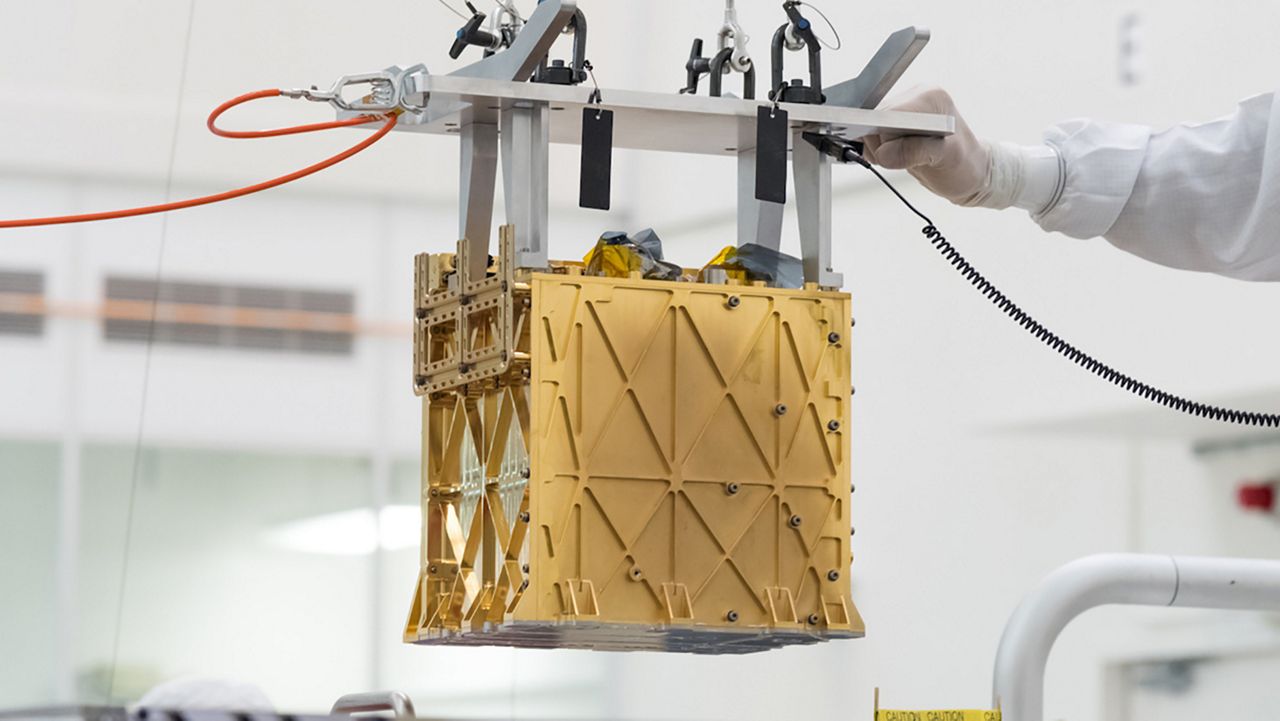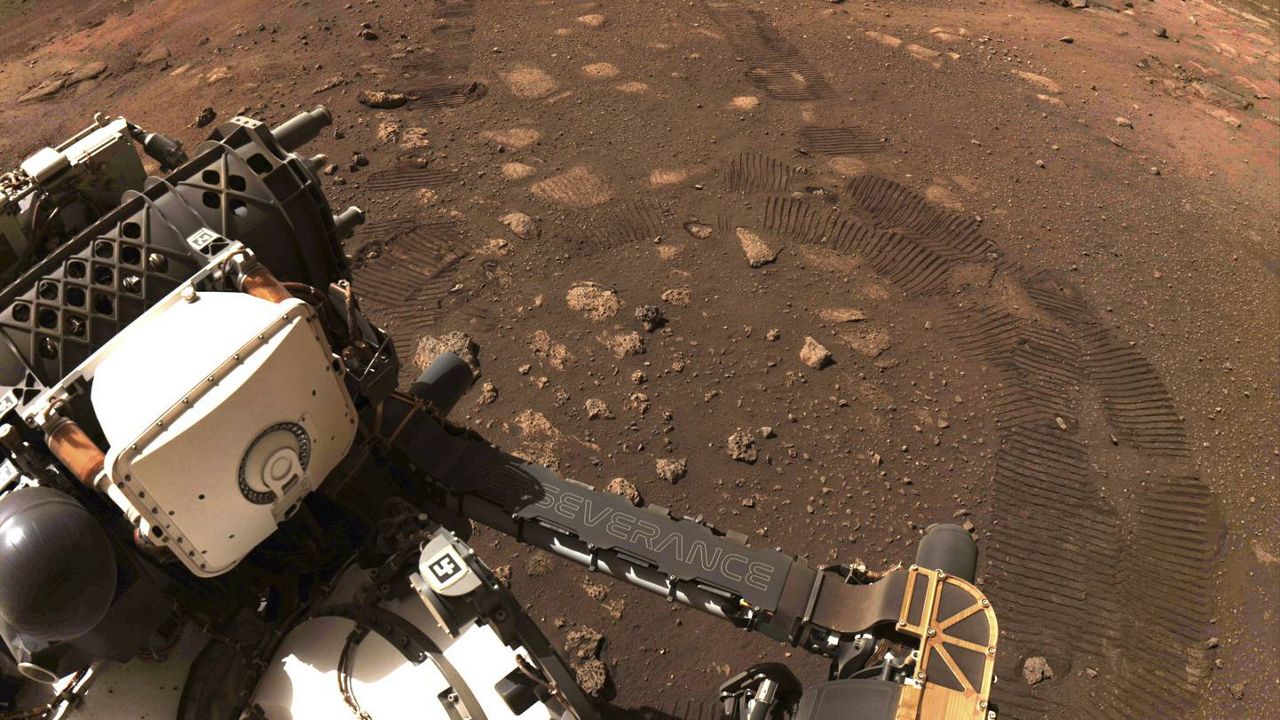KENNEDY SPACE CENTER — After completing its 16th and final test of generating oxygen in the mostly carbon dioxide atmosphere of Mars, MOXIE will leave a legacy for its bigger future descendants, says the principal investigator of the project.
What You Need To Know
- MOXIE created enough oxygen for a person to breathe for six hours
- Principal investigator explains the benefits of MOXIE
- Dr. Michael Hecht hopes MOXIE's achievements will not be forgotten
- 🔻Scroll down to learn more about Mars🔻
That’s a lot of MOXIE
The Mars Oxygen In-Situ Resource Utilization Experiment, better known as MOXIE, was one of many devices and experiments on the Perseverance rover, which landed on Mars in 2021.
During its time on the Red Planet, the microwave oven-sized device generated oxygen from the carbon dioxide in the air 16 times.
It was able to produce molecular oxygen by an electrochemical process that separates one oxygen atom from each molecule of carbon dioxide from Mars’ thin atmosphere, stated NASA.
In all total, MOXIE generated 122 grams of oxygen.
That is about six hours of breathable air for the average person who is sitting in a chair and looking at a computer, principal investigator of the MOXIE project Dr. Michael Hecht explained to Spectrum News.
The final time MOXIE created oxygen was on Aug. 7, of this year, with the instrument making 9.8 grams.
Because the Perseverance rover only has so much power to operate, 100 watts, MOXIE can only generate a small amount of oxygen, which is safe, said Hecht.
“No doubt about that. It is safe to breathe,” Hecht said.
A MOXIE descendent, a full-scale unit, would need to be the size of a washer machine to produce the amount of oxygen needed for astronauts to breathe and get home, Hecht said.
It was MIT that created MOXIE, which weighs 37.7 pounds on Earth but a light 14.14 pounds on Mars due to the planet’s lower gravity.

Looking into the future
Hecht said the primary use of the full-scale unit would be to create liquid oxygen so future astronauts can refuel their craft — possibly SpaceX’s Starship once completed — to make the journey back home to Earth.
Being able to create fuel means future Mars missions will not need to bring so much rocket propellant with them. Fuel and weight are considerable factors for any space mission.
This future full-scale unit would need another unit attached to it, explained Hecht, saying this unit would be designed to liquefy the oxygen and store it.
“It should produce 2 to 3 kilograms an hour of oxygen,” said Hecht, who is also the deputy project director of the Event Horizon Telescope Collaboration that takes pictures of black holes from Earth.
“We learned a great deal in operating MOXIE,” he said as his team discovered ways to improve the instrument, adding that “there wasn’t one thing but constant moments of Ahas,” when working with the device.
More MOXIE
How long it would take for a full-scale version of MOXIE to be built and placed on Mars — between five to 10 years, said Hecht — is not the real question but according to him, what should be asked is when will NASA or private companies like SpaceX be ready to go to the Red Planet?
Hecht said that currently, the American space agency has its eyes on a celestial body that is much closer to Earth.
“Now NASA is focusing on getting to the moon,” he said of the Artemis missions.
But it will take time to build such a full-scale version, as Hecht explained that it took him and his team 10 years from the moment they wrote the MOXIE proposal to the smaller device being on Mars.
Hecht shared that he hopes when people are ready to visit Mars that they do not forget about the achievements that MOXIE made and how it can contribute to future missions.
Knowing the mission
As previously mentioned, the Perseverance rover brought equipment and experiments with it, but one of its objectives is astrobiology, the study of life outside of Earth, and any possible signs of ancient microbic life that may have once been on Mars.
The car-sized rover, which weighs about 2,260 pounds, has other mission objectives, such as collecting samples such as rocks and leaving them at certain locations so future astronauts can come to collect them.
After the story was originally published, Hecht later contacted Spectrum News to point out that on Thursday, Sept. 21, an independent review board issued a report on NASA’s goals of returning those samples from Mars, noting its findings and recommendations, stated NASA in a press release. The American space agency is planning to create a team, headed by Sandra Connelly, its deputy associate administrator for science, to address the report.
In the press release, NASA stated the importance of returning the Martian samples and how it will “revolutionize our understanding of Mars by bringing scientifically selected samples to Earth for study using the most sophisticated instrumentation around the world.”



